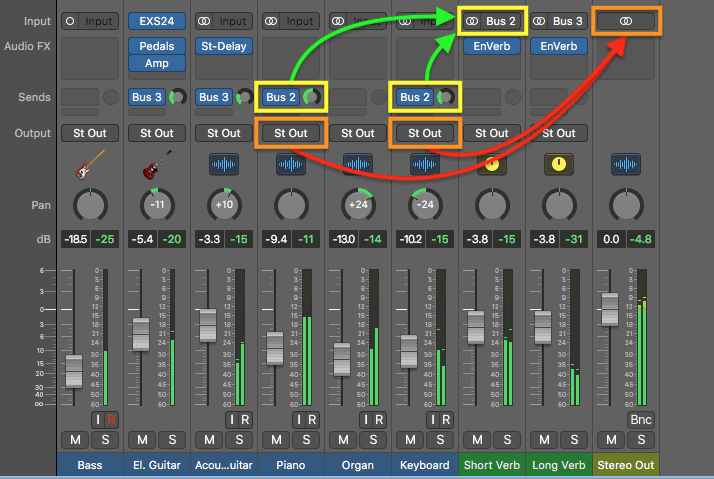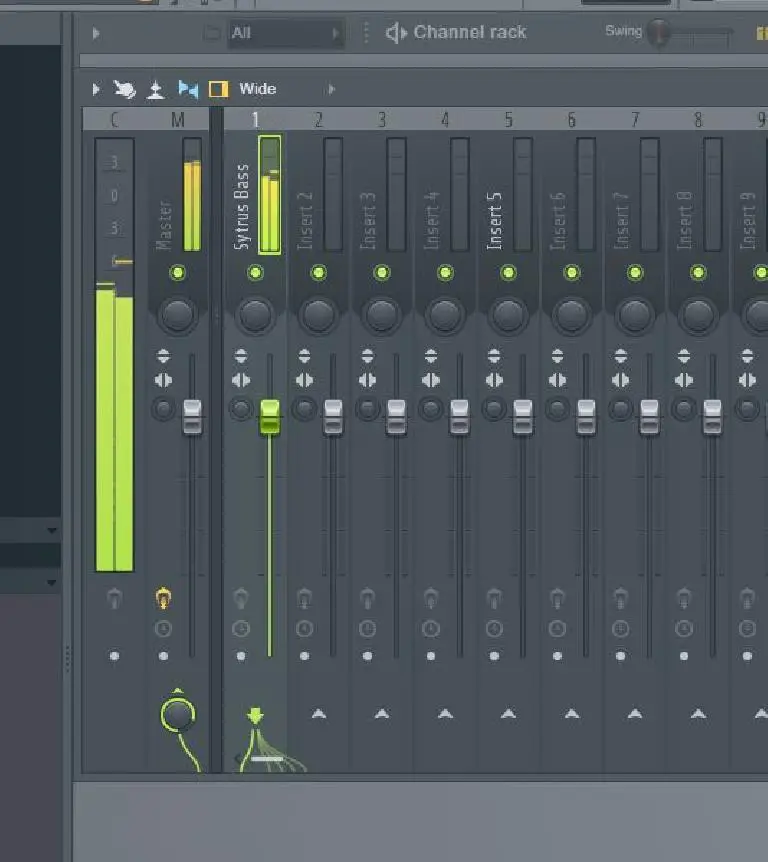
If you’re a person that’s been in music production for a reasonable amount of time you’ve probably come across the term “bus”.
In Audio mixing, a bus is basically a signal path to which several individual audio tracks can be assigned so they can be manipulated as a group. This can be done either physically or digitally.
A bus is how you route and send selections of audio to a particular place where you can then further apply effects and process them.
On a physical mixing console you carry this out using various cable patches and switches, whilst on a DAW to basically carry out with the functionality available for you to use.
Knowing what a bus is very important because it can change how you carry out your audio production process.
A little History of Buses
The term bus or buss is derived from back in the day when large mixing boards were essentially the standard. It is common to find the word bus written as buss but don’t get confused because they mean the same thing.
Nowadays most work is done within Digital Audio Workstations that come equipped with their own mixers. This is quite a good thing because you no longer have to deal with cable patches and other things on a physical mixer. All you essentially have to do is basically use your DAW, get a few clicks in and you’re home and dry.
The Master

The master on a mixer within your DAW is essentially a bus to which audio is sent. You’ll notice that once you record audio or play audio within your DAW, it will be played through your master channel.
All settings and effect applications that you use on your master will basically be sent to all the audio tracks within your session.
This should give you a clear indication that a bus is simply an output channel that collects audio from any channel that is routed to it.
It doesn’t really matter how many buses you have within your DAW, they’ll essentially all bave to go through your master channel because it serves as the master control.
The master control channel acts as the place where you can make your final touches and adjustments before you render out your audio from your DAW.
The advantage that comes with a master bus is that you can apply various adjustments that will essentially be applied uniformly to all audio within the DAW. This can be a good way to have all your audio conform to one specific control.
For example in the case that you notice that your mix is too loud causing it to distort or clip. You can simply use the volume control to be applied all elements in a mix or very specific cases like a clipping mix, you can employ a soft clipper or limiter to control the peaks and be able to keep all your sounds below 0db which is essentially the loudest you can get any mix to so it doesn’t distort.
Subgroup mix bus
Since we are on the topic of busses its important that I also talk about sub group busses because you’ll most likely encounter them or simply have and do not know it yet.
A subgroup buss is simply a group of tracks that are controlled as a single group. This is very common in mixing and beat making because it makes working with a lot of vocals or sections that much easier.
With a subgroup bus you can easily highlight and route the tracks you feel should be grouped or are already grouped to a single bus with which you can then further process them to your liking.
For example, say you’re recording an RnB singer and they decide to have more than one harmony recorded to back up their vocal in a section like a chorus or bridge or any other part that would benefit from having more than one harmony. Let’s say they end up recording 3 harmonies that should play at the same time to give that cool harmonizing effect that makes vocals more full and basically improves the listening experience for the end listener.
So once you have these three harmonies, you may want to add similar effects to them because they are the backing vocals and they need to be uniform or at the very least similar with a few differences here and there.
You can create a group buss with all these backing vocals so they can form a group. Once you have this group bus you can then easily apply various effects to it which will affect all of the backing tracks.
This can be a great way to handle complex compositions that have a lot of individual tracks recorded all needing to be processed and having effects applied to them. Creating a subgroup mix buss can save you a lot of time and energy.